Drip coffee is one of the most popular brewing methods. It’s easy, consistent, and produces a consistent cup that suits almost anyone’s taste. All you need is coffee grounds, a filter, water, and your coffee will be ready in minutes automatically. It’s great for making several cups at once, and the flavor is smooth and well-balanced.
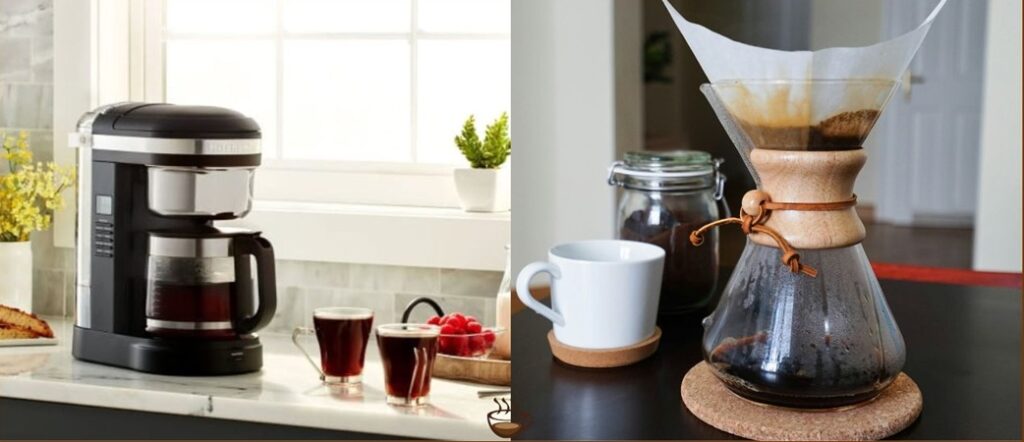
This guide breaks down everything you need to know about drip coffee—from what it is and how to make it, to the best beans and comparisons with other brewing styles.
What is Drip Coffee?
Drip coffee is one of the most popular ways to make coffee at home. You usually make it with an automatic coffee maker. Just add coffee grounds to a paper or metal filter, pour in some water, and press a button. The machine heats the water and slowly drips it over the coffee grounds. The brewed coffee then flows into a pot or carafe below.
It’s also called filter coffee because the paper or metal filter catches the grounds while letting the brewed coffee flow through. The whole process takes just a few minutes and requires minimal effort on your part.
The result is a clean, smooth cup of coffee without any grounds or sediment. You can make anywhere from a single cup to a full pot, depending on your coffee maker. It’s perfect for busy mornings when you want good coffee without much fuss.
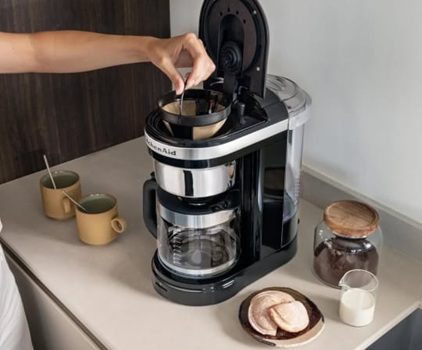
What are the Different Types of Drip Coffee Makers?
Drip coffee makers come in several types, each offering unique features and brewing styles. Some are basic and easy to use, while others provide more control and customization for coffee lovers who enjoy crafting the perfect cup.
Standard Automatic Drip Coffee Maker
These are the most common types of drip coffee makers, found in homes, offices, and even hotel rooms. Electric models are simple to operate—just add water to the reservoir, place ground coffee in the filter, and press a button. The machine heats water to the right temperature and drips it through your coffee.
They come with glass carafes or thermal carafes that keep coffee hot. Some electric models are basic, while others come with advanced features like programmable timers, brew strength settings, and built-in grinders. They’re ideal for making 4-12 cups at once with minimal effort.
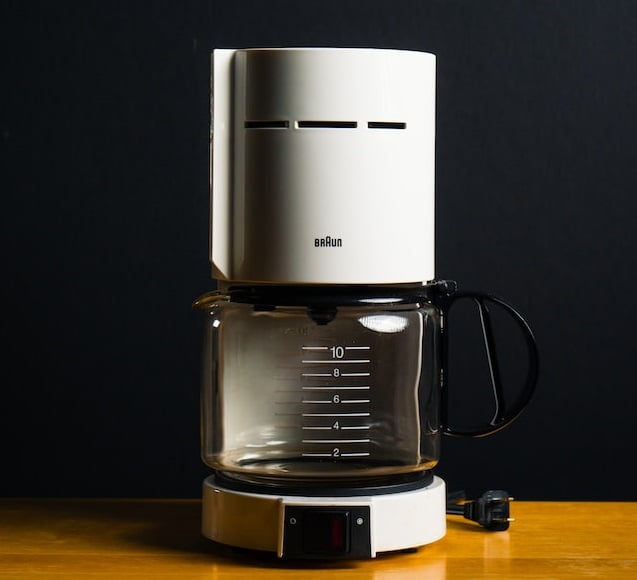
Manual Drip Brewers:
Manual drip brewers or Pour Over Coffee makers, such as the Chemex, Hario V60, and Kalita Wave, give you full control over the brewing process. You place a filter in the dripper, add grounds, and slowly pour hot water over them in circles. The water drips through into your cup or carafe below. You control the water temperature, pour speed, and timing.
These brewers require more attention and skill but reward you with a more customized flavor profile. They’re popular among coffee enthusiasts who enjoy experimenting with grind size, water ratios, and pour techniques.
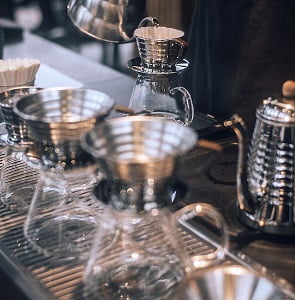
Single-Serve Drip Makers:
These machines use pre-packaged coffee pods or K-Cups. You pop in a pod, press a button, and get one cup of coffee in under a minute. Keurig and Cuisinart are the most popular brands, but many companies make these now. They’re super convenient but more expensive per cup than regular ground coffee. You get tons of flavor options since each pod is different.
Some models offer adjustable cup sizes, temperature control, or reusable pod options for more flexibility. They might not have that deep flavor you get from manual machines or high-end models, but they’re just right for busy mornings or small households that don’t need a whole pot of coffee.
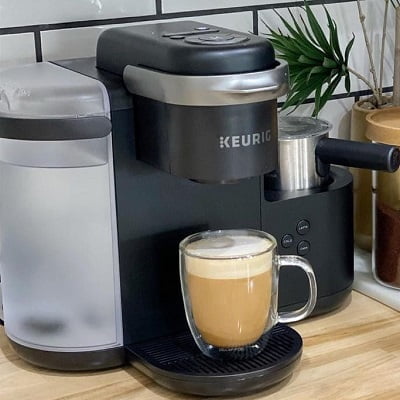
What Coffee Grinders Should You Use for Drip Coffee
Some drip coffee machines come with built-in grinders, making the brewing process even more convenient. These machines grind the beans right before brewing, which helps preserve the aroma and flavor of fresh coffee.
Blade Grinders:
Basic drip machines with grinders usually use blade grinders. These use spinning blades to chop up your coffee beans, kind of like a blender. These are more affordable and easy to use, but often produce uneven coffee grounds, which can lead to inconsistent flavor in your cup.
Burr Grinders:
Higher-end drip machines often feature burr grinders. Two metal or ceramic plates called burrs crush the beans between them. You can adjust the distance between the burrs to get exactly the grind size you want. They produce uniform particles, which means your coffee extracts evenly and tastes better.
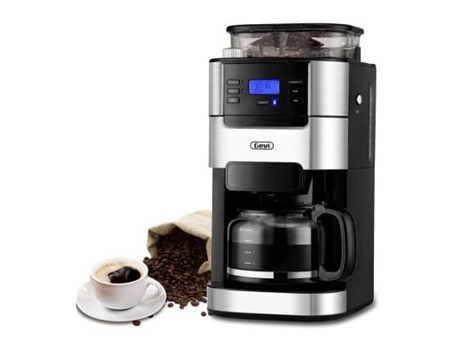
I strongly advise against buying a machine with a blade grinder. It’s way better to go for one with a burr grinder. If that’s out of your budget, you can just grab a basic machine and stick with pre-ground coffee instead.
What filters are used in Drip Coffee?
There are two main types: paper filters and metal filters.
- Paper filters are the most common. They’re made from bleached or unbleached paper and come in different shapes, like a cone, a basket, or a flat-bottomed. You throw them away after each use, which makes cleanup super easy. Paper filters catch even the finest particles and oils, giving you a clean, bright cup of coffee.
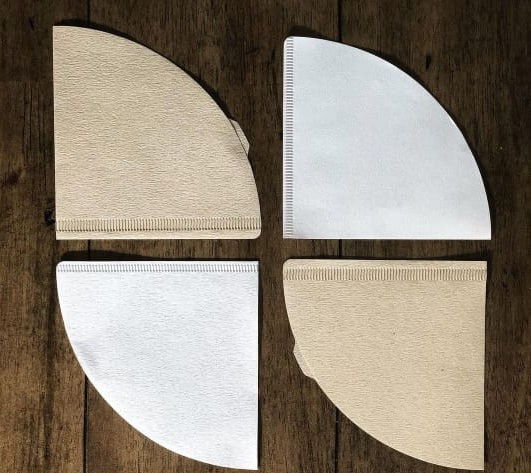
- Metal filters are reusable screens made from stainless steel mesh and often come built-in in many machines. They let more oils and fine particles through than paper, which gives your coffee more body and richness. You just rinse them out after brewing and use them again. Some people love the extra oils, while others find the coffee too heavy or gritty.
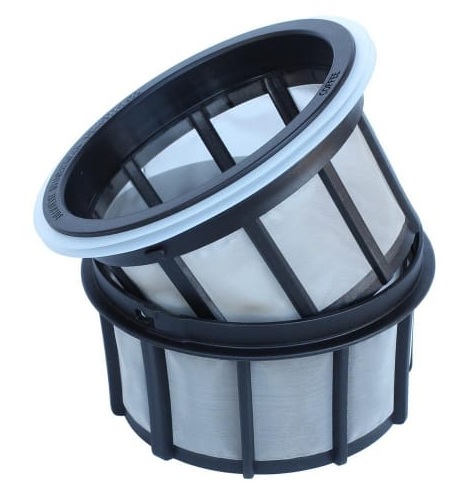
How to Make Drip Coffee?
Making drip coffee is a simple and rewarding process. Here is how to make:
Step 1: Gather Your Equipment
You’ll need a drip coffee maker, coffee beans or grounds, a filter, and fresh water. If you have whole beans, grab your grinder too. Make sure your coffee maker is clean – old coffee residue makes everything taste bitter.
Step 2: Measure Your Coffee and Water
Use a 1:15 to 1:17 ratio of coffee to water. That means about 2 tablespoons of coffee for every 6 ounces of water. This gives a balanced strength, not too weak or too strong.
Step 3: Grind Your Coffee
If you’re using whole beans, grind them to a medium consistency that looks like coarse sand. Don’t grind too fine or your coffee will taste bitter. Don’t go too coarse either, or it’ll be weak and sour.
Step 4: Prep Your Filter and Coffee Maker
Place a paper filter in the filter basket, or make sure your permanent filter is clean and in place. If using paper filters, rinse them with hot water first to remove any papery taste. Add your ground coffee to the filter and give it a gentle shake to level it out.
Step 5: Add Water and start brewing
Fill your coffee maker’s reservoir with fresh, filtered water. Hit the brew button and let the machine do its work. The water will heat up and start dripping through your coffee grounds. This usually takes 4-6 minutes for a full pot. Don’t lift the carafe while it’s brewing – most makers have a pause feature, but it can make a mess.
Tips for a Perfect Drip Coffee Cup
Use fresh coffee beans: Buy whole beans and grind them right before brewing. Coffee starts losing flavor within days of grinding, so pre-ground coffee never tastes as good. Look for a roast date on the bag and use beans within 2-4 weeks.
Use filtered water: Use filtered or bottled water if your tap water tastes off or has a strong chlorine smell. Water makes up 98% of your coffee, so it really matters.
Pre-wet the paper filter: Rinse your paper filter with hot water before brewing. This removes any papery taste and warms the brewer for even extraction.
Avoid leaving coffee on the hot plate too long: Drink your coffee within 30 minutes of brewing for the best flavor. If you need to keep it warm longer, transfer it to a thermal carafe instead of leaving it on the hot plate. Heat plates cook the coffee and create that burnt, bitter taste that ruins a good cup.
What to Consider When Buying a Drip Coffee Maker?
1. Cost: Drip coffee makers range from $25 for basic models to $300+ for premium machines with all the bells and whistles. You can get a solid, reliable coffee maker for $50-100 that will serve you well for years.
2. Cone vs Flat Bottom: Cone-shaped filter baskets create better water flow and more even extraction than flat-bottom designs. Most higher-end machines use cone filters, while budget models often stick with flat bottoms.
3. Size and Design: Pick a machine that matches your kitchen’s aesthetic and fits comfortably in your designated coffee station.
4. Capacity: Think about how much coffee you actually drink rather than buying the biggest machine available. Single people or couples do fine with single-serve or 4-6 cup makers, while families need 8-12 cup capacity.
5. Cleaning and Maintenance Look for machines with removable, dishwasher-safe parts like the carafe, filter basket, and water reservoir. Avoid models with lots of hard-to-reach crevices where coffee residue can build up.
6. Extra Features: Programmable timers let you wake up to fresh coffee, which is incredibly convenient for busy mornings. Brew strength settings adjust the extraction time to make coffee stronger or milder. Auto-pause lets you grab a cup mid-brew, though this can affect extraction quality. Built-in grinders save counter space but are harder to clean and replace.
7. Brand and Customer Ratings: Stick with established brands like Cuisinart, Hamilton Beach, Mr. Coffee, or Bonavita that have good customer service and replacement parts.
How to Clean a Drip Coffee Maker?
Here’s a simple cleaning routine for your drip coffee maker
Regular Cleaning
Step 1: Clean the Carafe and Filter Basket
Turn off your coffee maker and let it cool down completely. Remove the carafe and filter basket. Wash them with warm, soapy water and rinse thoroughly. If you used a paper filter, throw it away. For permanent filters, rinse under hot water to remove coffee oils and residue.
Step 2: Wipe Down the Exterior
Use a damp cloth to clean the outside of your machine. Pay attention to the hot plate where coffee drips might have dried on. Clean the area around the filter basket where grounds can accumulate.
Monthly Deep Cleaning
You need to descale the machine every month to eliminate scale buildup inside it.
Step 1: Clean the Water Reservoir
Empty any leftover water from the reservoir. Wipe it down with a damp cloth. If your reservoir is removable, wash it with soap and water, then rinse well.
Step 2: Descale with Vinegar
Fill the water reservoir with equal parts white vinegar and water. Place an empty carafe under the brew basket. Run a complete brew cycle to clean the internal water lines. The vinegar removes mineral deposits and coffee oils that build up over time inside the machine
Step 3: Rinse Thoroughly
After the vinegar cycle finishes, run 2-3 cycles with just plain water to rinse out all the vinegar. You don’t want any vinegar taste in your next pot of coffee. Keep running water cycles until you can’t smell vinegar anymore.
What’s special about Drip Coffee?
Drip coffee is a beloved choice for many because it’s so easy to make and always tastes great. No wonder it’s the most popular brewing method in the USA[1]. Here is something special about drip coffee makers:
1. Balanced Flavor
Unlike espresso or French press methods, it uses a slower extraction process that gently pulls out flavors from the coffee grounds. This gives you a cleaner, smoother, and more balanced cup, free from bitterness. It’s ideal for medium to light roasts that have subtle tasting notes, like fruit or floral hints.
2. Consistency You Can Count On
Drip coffee gives you the same great taste every single time. The machine controls water temperature and flow rate automatically, so you don’t have to guess or worry about technique. Once you find your perfect coffee-to-water ratio, you can recreate it perfectly every morning.
3. Programmable Features
Many modern drip machines feature programmable settings, including brew strength adjustments and timers, making mornings easier.
4. Great Value for Money
Once you buy the machine, each cup costs just pennies in coffee and filters. You can use any type of ground coffee, from budget brands to premium single-origins. It’s much cheaper per cup than coffee shops or single-serve pods.
5. Forgiving and Easy to Master
Unlike espresso or pour-over methods, drip coffee doesn’t require special skills or precise timing. Even beginners can make good coffee right away.
Drip Coffee FAQs
What are the best Coffee Beans for Drip coffee?
The best coffee beans for drip coffee are typically medium roast. This roast level offers a balanced flavor that isn’t too bitter or too acidic, making it ideal for the slower brewing process of drip machines.
If you like a brighter, more fruity flavor, try a light roast. These beans keep more of their natural flavors and work well with the slower brewing of drip coffee.
Dark roasts can also be used, but they bring bold, smoky notes. Some people love that intensity, but for drip, it can sometimes taste a bit too bitter or flat.
Freshness is key—always check the roast date and aim to use beans within a few weeks of roasting to enjoy their full flavor.
Single-origin beans are a great choice because they offer a cleaner and more distinct taste profile, allowing you to appreciate the unique characteristics of a specific region.
Popular options include Colombian beans for their smooth and nutty notes, Ethiopian beans for their floral and fruity brightness, and Brazilian beans for a rich, chocolatey flavor. These varieties pair well with drip brewing and produce a consistently enjoyable cup.
What’s the best Grind Size for Drip Coffee?
A medium grind is the best choice for drip coffee. The particles should look like coarse sand or sea salt – not as fine as table salt, but not as chunky as breadcrumbs either. This size gives you the perfect balance between extraction time and water flow through your coffee bed.
If your coffee tastes bitter or harsh, try grinding a bit coarser next time. If it tastes weak or sour, go a little finer. Your grinder and beans will be slightly different from everyone else’s, so you might need to experiment to find your perfect size.
What’s the best Water temperature for Drip Coffee?
The perfect temperature is between 195°F and 205°F (90°C to 96°C). This range extracts the best flavors from your coffee grounds without burning them or pulling out harsh, bitter compounds.
Most automatic drip coffee makers heat water to this temperature automatically, so you don’t need to worry about it.
What is the Best coffee-to-water Ratio for Drip Coffee?
The standard ratio for drip coffee is a 1:15 to 1:17 ratio of coffee to water. That means for every gram of coffee, you use 15-17 grams of water. In everyday terms, this works out to about 2 tablespoons of coffee for every 6 ounces of water.
You can adjust the strength to suit your preference for coffee.
Is drip coffee good with milk?
Yes, drip coffee tastes great with milk. You can use whole milk, skim milk, or even plant-based options like almond, oat, or soy milk. Medium and dark roast beans pair especially well with milk in drip coffee. These roasts have chocolatey, nutty flavors that complement milk perfectly.
What is the Caffeine Content of Drip Coffee?
An 8-ounce cup of drip coffee contains approximately 80–120 mg of caffeine, depending on the type of beans and the brew strength. That’s more than instant coffee but less than espresso per ounce.
Can you make Cold Coffee with a Drip Coffee Maker?
You can definitely make cold coffee with a drip coffee maker. The easiest way is to brew your regular drip coffee, then pour it over a glass full of ice. This instantly cools it down and gives you iced coffee right away. Just use a slightly stronger coffee-to-water ratio since the melting ice will dilute your drink.
Drip Coffee Compared to Other Coffee Makers
Drip Coffee vs Pour Over
Drip coffee and pour-over both brew by running hot water through ground coffee, but they work differently. Drip coffee makers handle everything for you with the push of a button. Pour over is done by hand, so you control the water flow and timing.
Pour-over usually brings out more flavor. Drip coffee is quicker and more convenient for everyday use.
Drip Coffee vs Espresso
Drip coffee and espresso are very different in taste and how they’re made. Espresso uses high pressure to force hot water through finely ground coffee in just 25-30 seconds. This creates completely different flavor profiles and caffeine concentrations.
Espresso produces a concentrated 1-2 ounce shot with intense, bold flavors and a thick, syrupy texture. It is usually used as a base for drinks like lattes, cappuccinos, or americanos.
Equipment-wise, espresso requires expensive machines that generate 9 bars of pressure and precise temperature control. Drip coffee makers are much simpler and cheaper, starting around $25.
Drip Coffee vs French Press
The main difference is that drip coffee uses a filter to separate grounds from the liquid, while French press lets coffee grounds steep directly in hot water before you press them down with a metal mesh.
French press produces a full-bodied, rich coffee with more oils and fine particles that give it a heavier mouthfeel. Drip coffee creates a cleaner, brighter cup since the paper filter removes most oils and sediment.
French press is completely manual and portable – no electricity needed, making it great for camping or travel.
Drip Coffee vs Instant Coffee
The main difference is that drip coffee uses fresh coffee grounds that you brew with hot water, while instant coffee is pre-brewed coffee that’s been dried into powder or granules. You just add hot water to instant coffee, and it dissolves immediately, while drip coffee requires a brewing process.
Instant coffee is incredibly convenient – it takes 30 seconds to make and requires no equipment beyond a cup and hot water. It’s made from pre-brewed and dehydrated coffee, which can taste flat or slightly bitter. If you’re short on time, instant coffee is a decent backup. But for a consistently better-tasting and aromatic experience, drip coffee is the superior choice.
References:



